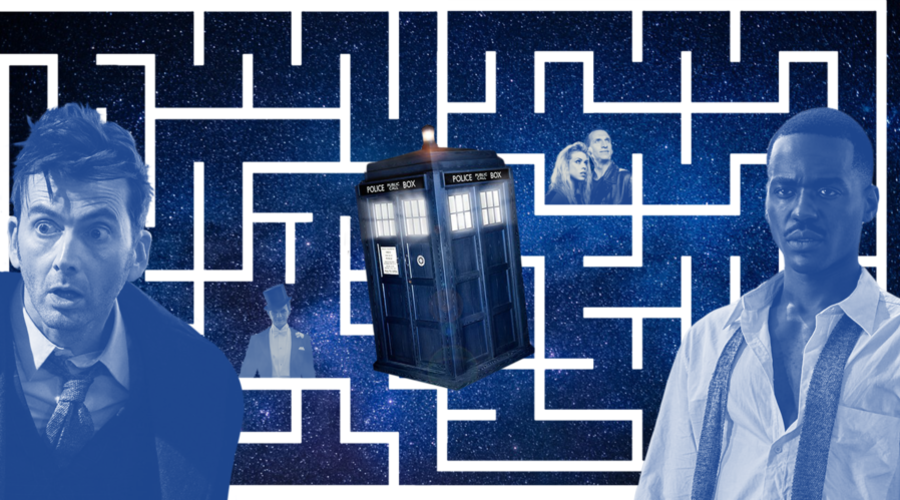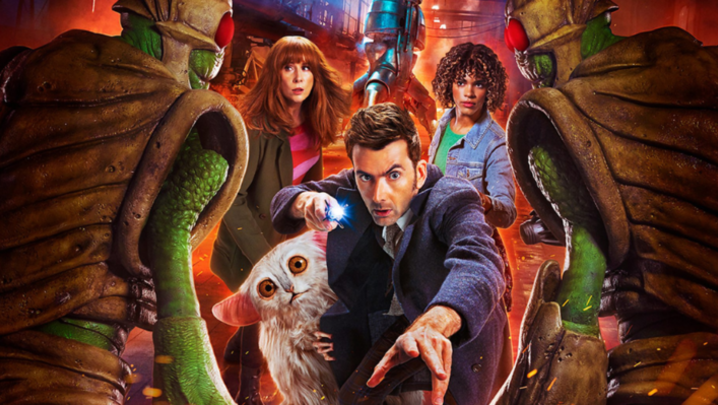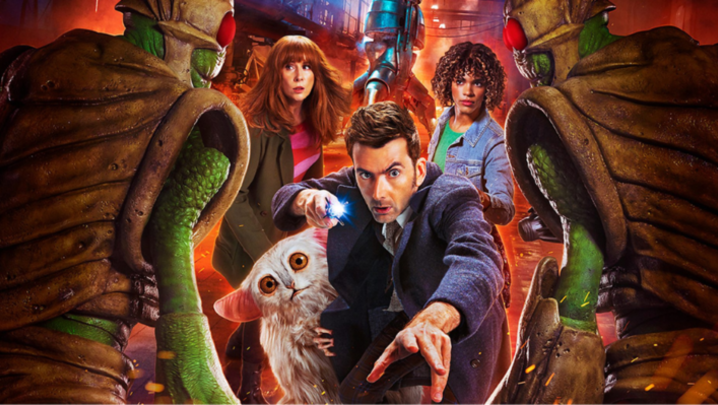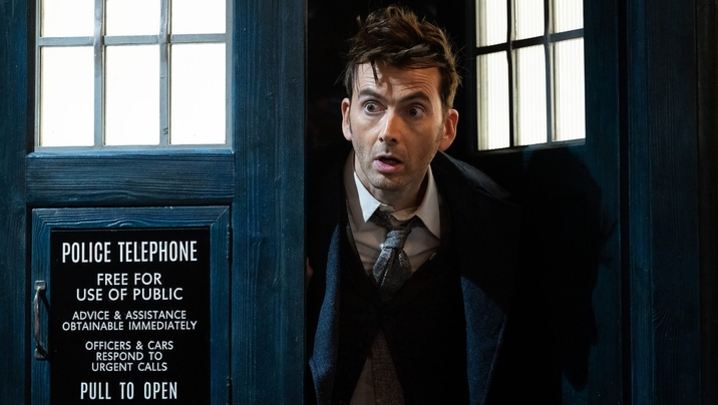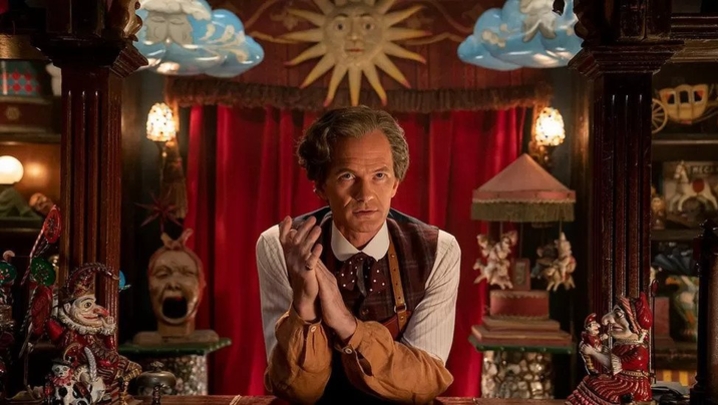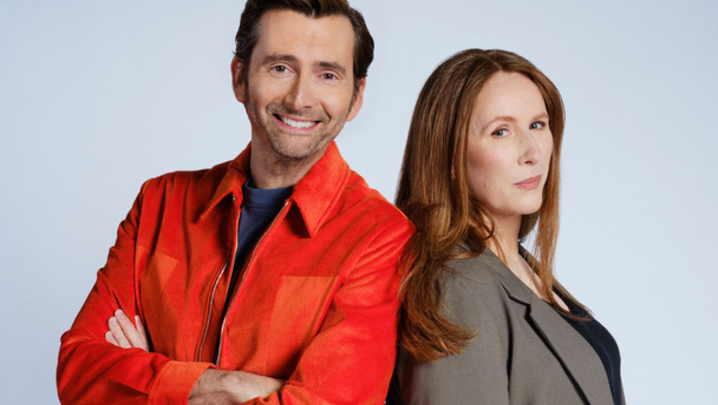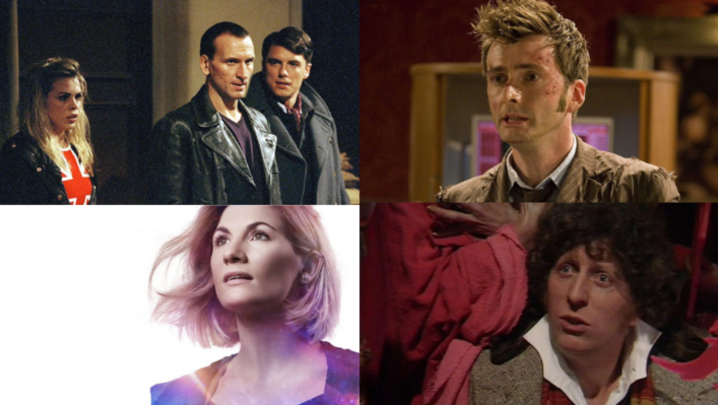After 60 years of chaos both in-universe and on-set, getting into Doctor Who can be a daunting task. If you don’t know your Doctor from your Dalek, have no fear: our explainer is for you.
Who is the Doctor?
You probably know the basics. The Doctor is an alien who appears human, but is in fact a Time Lord. This means they have two hearts and can cheat death by regenerating, a process which involves changing their body and personality.
The Doctor travels around in the TARDIS, a spaceship whose name stands for Time And Relative Dimensions In Space. This enables the Doctor to travel anywhere in the universe, including – you guessed it – across time.
What made each Doctor unique?
So far, 13 Doctors have helmed the show. Other incarnations of the Time Lord are brought in from time to time for briefer supporting roles, such as the War Doctor (John Hurt) or Fugitive Doctor (Jo Martin). David Tennant (Broadchurch) is returning to play the 14th Doctor for three 60th anniversary specials, after playing the 10th Doctor.
Each actor has introduced something new to the role. Where the First Doctor (William Hartnell) was a grandfatherly figure, the Third Doctor (John Pertwee) was a man of action, practising a martial art known as Venusian Aikido.
The Fourth Doctor (Tom Baker) brought more humour to the TARDIS, not to mention an incomparable hat and scarf. The mix of jokes and styles can be seen in later iterations, notably the 10th and 11th Doctors (David Tennant and Matt Smith, respectively).
However, a dark streak runs through all the Doctors. Later on in the series, the ninth incarnation (Christopher Eccleston) explains that the Time War has recently rendered him the last of his kind. Although we later find out that the Time Lords are actually alive and well in a separate ‘bubble universe’, grief still haunts the Doctor.
The Ninth Doctor is not considered the darkest, though. That dubious honour belongs to the Seventh Doctor (Sylvester McCoy), who on occasion proves cruel and manipulative. In 1989 serial The Curse of Fenric, he reveals that he only chose to travel with companion Ace (Sophie Aldred) so he could use her to defeat the villainous Fenric. A twinkly grandfather no more.
Who are the most iconic villains?
Without a shadow of a doubt, the Doctor’s best-known foe is the Daleks. Yes, they look like evil dodgems, but don’t let appearances fool you.
This is the evil race that faces off against Time Lords in the Time War. Though the conflict supposedly wipes them out, the Daleks never stay dead for long.
Almost as notorious are the Cybermen, or humans and humanoids who have ‘upgraded’ themselves into silver cyborgs devoid of emotion. The Doctor has encountered these villains far and wide, including in the South Pole, parallel Earths and abandoned space theme parks.
Why does the Doctor travel with a companion?
It gets lonely in the TARDIS. Not only does a companion provide, well, companionship, they also reign in the Doctor’s worst instincts.
Though usually peaceful, the Doctor has a dark side. As series four companion Donna Noble (Catherine Tate) puts it: “Sometimes I think you need someone to stop you”.
The companion is usually human, as the Doctor adores humanity’s creativity and curiosity. They consistently make it their mission to defend planet Earth, as they’ve reminded more than one alien foe.
There is sometimes, but not always, a hint of romance in the relationship between the Doctor and their companion. Series three companion Martha (Freema Aygeman) fancies the 10th Doctor (David Tennant), but eventually realises she’s wasting her time on an unrequited feeling.
Other companions have a different relationship with the Doctor. Series 10 companion Bill Potts (Pearl Mackie) is introduced to the Doctor as a student of his, sneaking into lectures at the university where they both work. Wilfred Mott (Bernard Cribbins) acts as companion in the 2009-10 special ‘The End of Time’, with whom the Doctor muses on mortality before regenerating. Donna Noble loves nothing more than to roll her eyes at the Doctor.
What’s Nu Who?
This is slang for the series of Doctor Who that have aired since the revival, spearheaded by showrunner Russell T Davies in 2005. Christopher Eccleston’s Ninth Doctor was the first in the revived version.
The show was first broadcast in 1963, before being taken off the air in 1989.
However, strictly speaking, the show wasn’t cancelled. Andrew Cartmel, script editor on the show from 1987-89, said in 2019 that the show was more placed on indefinite hiatus, leaving the show’s fate less certain:
“We weren't really cancelled, it’s just like ghosting your girlfriend, they just never phoned us back!" he said, speaking at an event promoting the Blu-ray release of the last series of the show that aired before the hiatus.
1963-89 Doctor Who – known as ‘Old Who’ or ‘Classic Who’ – would broadcast ‘serials’, or single storylines broken into several episodes. The revived version of the show, or Nu Who, mostly features standalone and two-part episodes, with some overarching stories weaved throughout the series.
In between Old and Nu Who is a 1996 movie simply titled Doctor Who, starring Paul McGann (Withnail and I) as the Eighth Doctor.
The film served as a backdoor pilot with American network FOX, who would have ordered six episodes of a new show if Paul McGann’s initial outing was a hit. However, this never came to pass.
What are ‘the lost episodes’?
Long before the rise of online fandom culture, studios took a less sentimental approach to their programming. From 1967 to 1978, the BBC routinely deleted archival material, leaving 97 episodes of Doctor Who partially or entirely missing.
The original number was far higher, before other episodes once considered lost were recovered. In 1981, the BBC’s Film and Videotape Library held just 116 of the 253 episodes that had been broadcast at the time.
Since then, episodes have turned up at car boot sales, the backs of cupboards and even a Mormon church. Copies of the still-missing fourth and fifth episodes of 1964 serial The Reign of Terror were destroyed in a bombing strike on Cyprus during the 1974 Turkish invasion. Episodes one to three, though, did safely make their way back from the Mediterranean island.
Lost episodes are also often returned from private collections, where other ‘missing’ episodes still exist, according to Chris Perry, CEO of TV archive company Kaleidoscope.
“We know where there is missing Doctor Who out there, but the owners won’t return it at the moment,” he said in a 2023 interview with Radio Times.
With that tidbit, you now know enough to make head or tail of Doctor Who in time for the anniversary specials. You can now join legions of fans hiding behind the sofa, or pretend to know absolutely nothing about the show, and wind up a few of those fans. The choice is yours.

